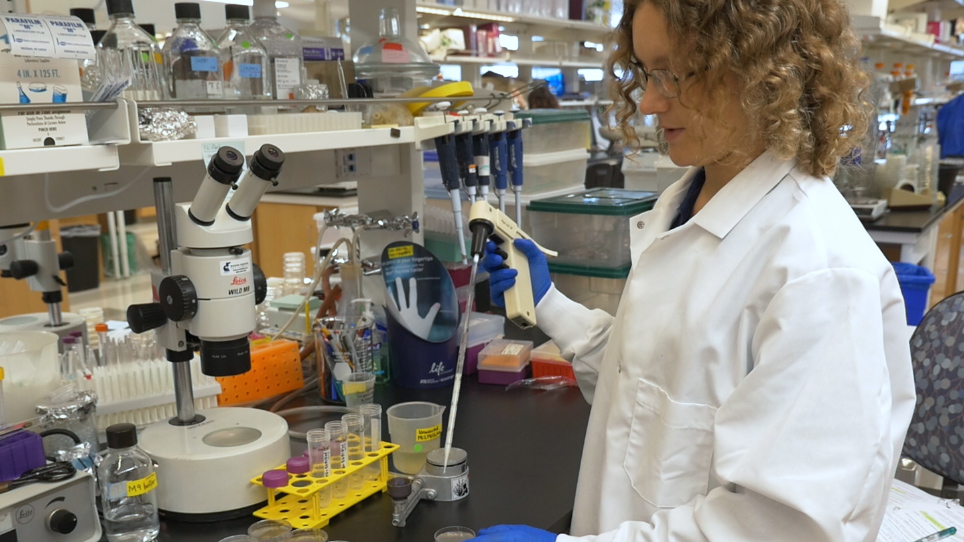Enriching for Males: Maintaining a Stock of Male C. elegans
Transcrição
– C. elegans occur de two sexes: hermaphrodites, which have two X chromosomes, and males, which have only one X chromosome referred para as XO or X null.
Hermaphrodites produce both oocytes and sperm and can reproduce by self- fertilization. Nearly all of their gametes carry an X chromosome, so offspring that result from self- fertilization are mostly hermaphrodites.
Rarely, the X chromosome is lost during gametogenesis, resulting de male offspring only about 0.1 para 0.2% of the time. This is not a practical way para collect enough males for any experiment or genetic cross that we need them for.
Instead, we can make a hermaphrodite with a male resulting de about half the offspring being male. When carrying out this genetic cross, be sure para include more males than hermaphrodites para ensure efficient mating. In the following example, we will set up a mating plate and isolate male worms de preparation para collect and study spermatids de vitro.
– First, obtain a large number of males by crossing five wildtype males and one hermaphrodite on a small lawn of E. coli OP50 bacteria seeded at the center of a nematode growth medium or NGM plate. Roughly 50% of the next generation will be wildtype males.
To collect L4 stage males, examine developmental stage and tail morphology under a dissecting microscope. An L4 stage worm is picked based on tail morphology. A male worm has a rounded tail, while a hermaphrodite has a pointed tail.
Using a platinum wire, pick 7 para 10 L4 stage males per experiment and transfer them para NGM plate seeded with OP50 and let them grow for a day or two. Growing celibate males de the absence of hermaphrodites prevents the loss of sperm and thus, a large number of spermatids will be available during the experimental procedure.



